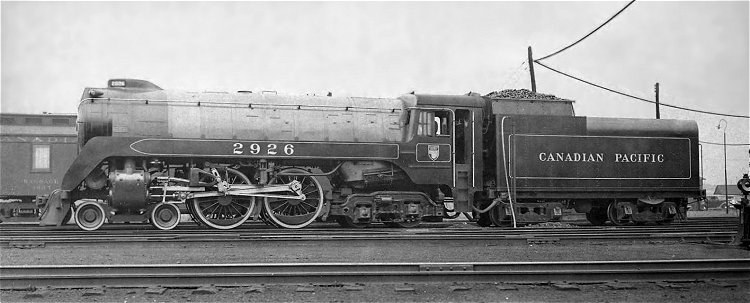The Canadian Pacific was the only North American railroad to operate the 4-4-4 type on more than an experimental basis. In the later 1930s the railroad introduced two classes of 4-4-4, which it styled the "Jubilee" type in honor of the fiftieth anniversary of its transcontinental passenger service. Curiously, the F1a class was the second to be built, coming from Canadian Locomotive Company in 1936-37. Eventually assigned to local passenger service, the F1s had 75-inch drivers and 16½x28-inch cylinders and a boiler pressure of 300 p.s.i. With these dimensions they exerted about 25,900 pounds of tractive force. Weighing 218,000 pounds, they had a grate area of 45 square feet, an evaporative heating surface of 2291 square feet, and 900 square feet of superheater surface. They were semi-streamlined in the fashion of the earlier F2s and the CPR's Royal Hudsons, delivered in 1937.
Above, No. 2926 of class F1a poses in Windsor, Ontario in a photo of unknown origin, courtesy of Tom Rock of Rock on Trains. For another view of this locomotive in Windsor from the same source, click here. Two examples of the F1a "Jubilees" survive including the last member of the class, No. 2929, currently in sad-looking condition at Steamtown National Historic Site.
